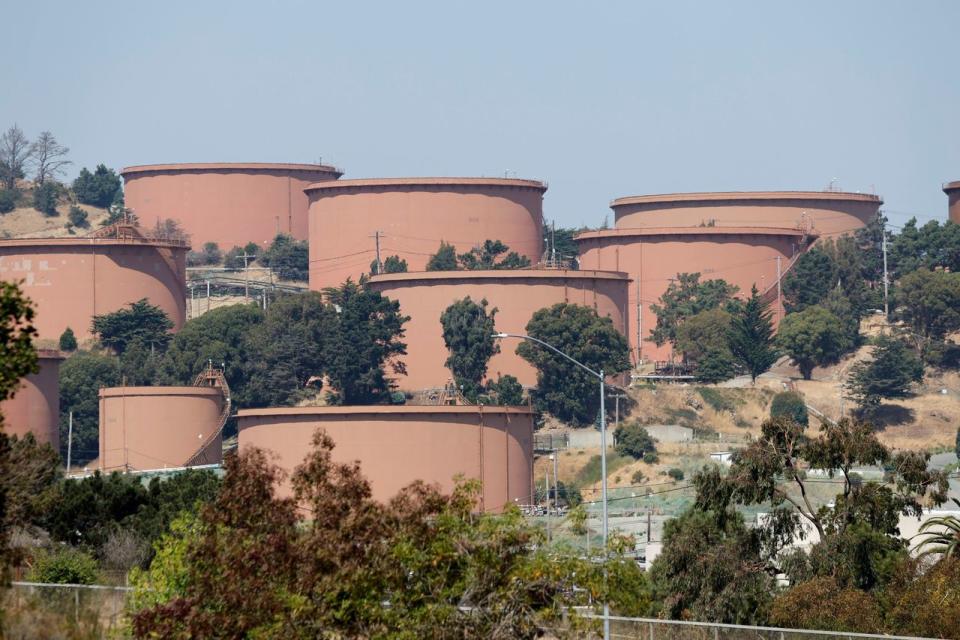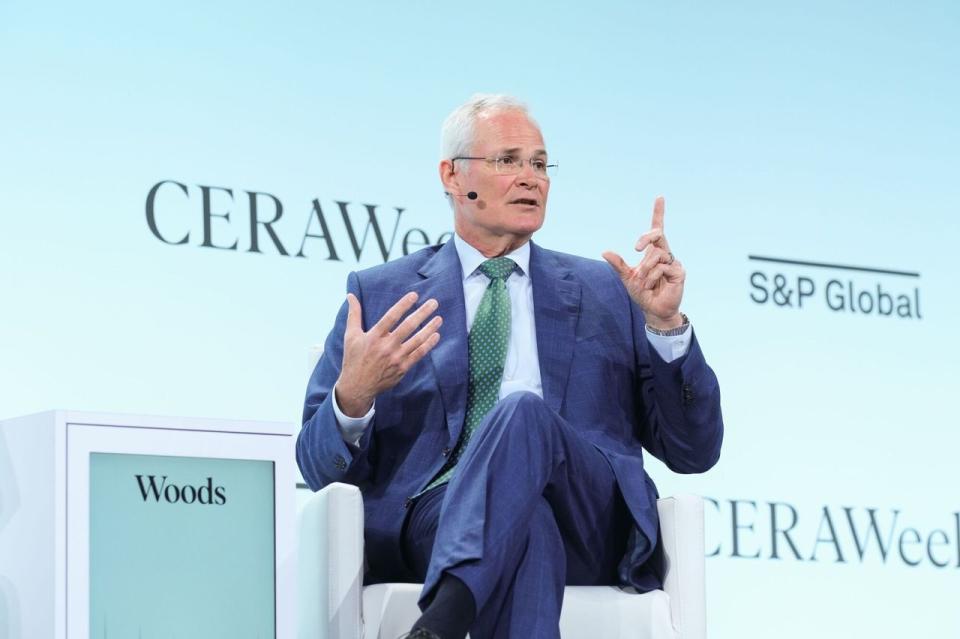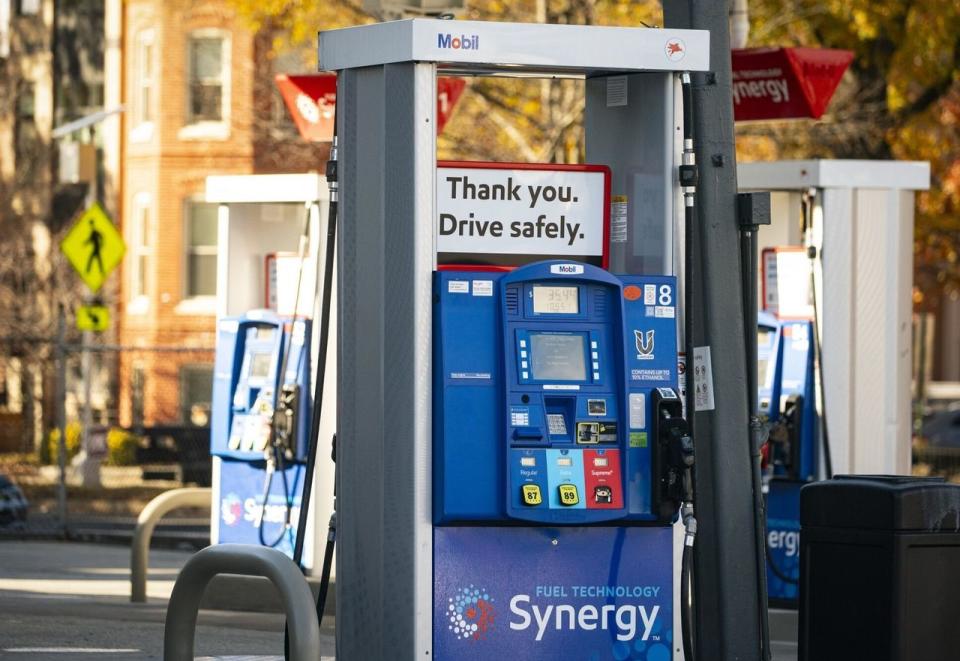Exxon and Chevron Earnings Fall Back to Earth

Exxon Mobil and Chevron posted lower first-quarter profits in part due to anemic natural-gas prices and refining margins, as their run of record-setting results tapers off.
Most Read from The Wall Street Journal
The oil-and-gas companies combined to bank $13.7 billion, maintaining their perch among the most profitable companies in the U.S. But the quarterly results were fairly humdrum by their recent standards.
On Friday, Exxon reported first-quarter earnings of $8.2 billion, down about 28% compared with the same period a year ago, as oil-refining margins and natural-gas prices fell from postpandemic peaks. Exxon missed Wall Street estimates by about 6%, according to FactSet. The weaker results were still its second-highest first-quarter haul in the past decade.
Chevron said it made $5.5 billion in the quarter, down about 16% from a year earlier but beating analysts’ estimates by about 2%.
For the past two years, Exxon Mobil and Chevron enjoyed a period of profitability unprecedented in their long histories as they rode surging energy prices to record profits and shareholder payouts. The two companies, who are also locked in a dispute over a massive oil discovery in Guyana, are adjusting to a new normal.
Oil-and-gas supplies have largely stabilized since the onset of Russia’s invasion of Ukraine, and some investors and analysts say companies such as Exxon—the western world’s largest oil refiner—will have to prove it can keep costs down and production up if the benefits of external market forces continue to ebb.

Exxon and Chevron attributed much of their declines in earnings to falling natural-gas prices and narrowing margins for making fuel. Exxon offset some of the decline as oil production rose faster than anticipated from its Guyana venture and its refineries put out a record amount of fuel for any first quarter. Its oil operations brought in $1 billion in cash over analysts’ expectations. Balance-sheet adjustments contributed significantly to the earnings miss, it said.
“We’re making great progress on our plans to grow the earnings power of our existing businesses,” Exxon Chief Executive Darren Woods said.
Chevron, meanwhile, said it increased global production 12% compared with the same period last year, following its purchase of PDC Energy and an operational boost in U.S. shale and Kazakhstan.
Oil prices have climbed about 17% this year, pushing Exxon’s share price to a record high in April. It surpassed Tesla’s market value earlier this month. Exxon shares fell about 3% Friday, while Chevron’s shares were roughly flat.
Exxon continues to give priority to investor payouts as it sent more cash to shareholders than it spent on new projects in the quarter. It slashed capital spending 8.5% from the prior-year period while raising dividends and share repurchases collectively to $6.8 billion.
Oil stocks are something of a conundrum for investors. Exxon shares are up about 15% on the year and Chevron about 11%. Their stocks are benefiting from investors looking for a hedge from persistent inflation, and energy companies have outperformed almost every other sector in the S&P 500.
Yet investors remain wary of piling into big oil stocks. The energy sector is still only a small part of the S&P 500, with its weighting currently around 4% of the index. Investors and analysts said they have only seen a modest uptick in Wall Street interest in the sector, and many are watching for an anticipated end to the American shale boom.
With expectations that U.S. oil-production growth will be modest this year—and potentially peaking in the next few—some investors are betting oil prices will eventually go up. Brent, the global oil benchmark, rose above $90 a barrel this month, but has edged lower this week.

The higher-than-expected inflation has helped to boost energy company stocks. Still, many on Wall Street are too fearful of a decline in fossil fuel’s role in future energy consumption to park a substantially larger amount of cash in U.S. oil companies, among other uncertainties.
“There’s still a lingering concern for this sector, that it’s a sunset industry because of the energy transition,” said Biraj Borkhataria, an analyst at RBC Capital Markets. The uncertainty about the future, he said, to some extent paralyzes much of the industry.
“The easiest thing to do is to keep buying back your shares, where you get rewarded in the short term, and then that allows you to grow your dividend as well,” Borkhataria said.
Guyana, where Exxon made one of the largest modern oil discoveries, remains a bright spot for the company.
Exxon Chief Financial Officer Kathy Mikells said Exxon produced more than 600,000 barrels a day in the South American country after bringing its latest oil-production project there up to speed in two months, faster than the industry’s standard, 15 months.
Exxon is now locked in a continuing dispute with Chevron over rights to Hess’s stake in Guyana, where Exxon leads the consortium developing offshore oil deposits. Chevron agreed to purchase Hess for $53 billion in stock last year, including Hess’ 30% stake in the Guyana project.
Exxon has challenged the deal, filing for arbitration over whether it has a right to pre-empt Chevron’s offer for Hess’s interest in the Guyana project, which analysts say makes up the majority of Hess’s market value.
Mikells said Exxon and Hess have both selected arbitrators, with a third yet to be appointed.
“We’re at the early part of this process,” she said, noting an arbitration panel will determine the timeline of the dispute.
Some investors are worried that the Guyana dispute could scuttle Chevron’s megadeal and are frustrated that the company missed production growth targets last year.
Chevron’s recent results in the Permian Basin in West Texas and New Mexico have reassured investors about its inventory of wells and how effective it is at operating them. Chevron’s oil-and-gas production in the U.S. rose 35% compared with a year ago, the company said.
This week, Chevron said it started up a major project upgrading its Tengiz oil field in Kazakhstan, also helping ease concerns after the company had to contend with delays and cost overruns there.
Write to Collin Eaton at collin.eaton@wsj.com

